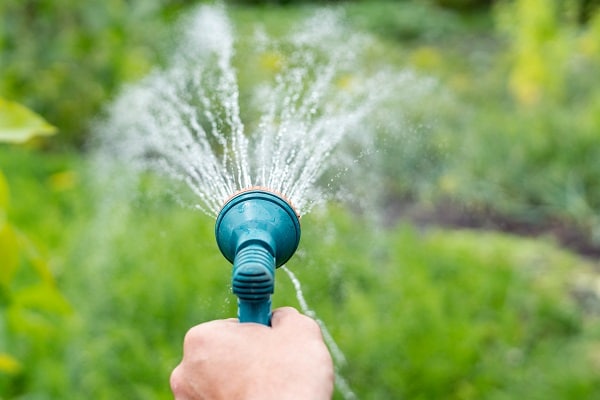Home / Information & advice / Turf & Lawns / Lawn aftercare / Watering your turf and soil drainage
Water is absorbed through the roots of turf. No water enters the leaves of turf, so wetting the leaves supplies the turf with no water. Water is essential to the growth of all turf because it carries nutrients to the roots. It is important in the growth of leaves, it causes the leaves to be soft and pliable, and it makes the leaves stand up. Whilst you cannot see it, water is used by the turf plant to cool itself. Improper watering can cause your turf problems.
Applying too much water can cause the soil to become saturated or soggy. If this condition persists for a couple of weeks in cool weather or for only a few days in hot weather, the grass will suffocate. Turf flooded by water cannot breathe, and turf must breathe to live. In addition, when the turf is flooded with water, disease can develop and kill the turf. It is important to realise that flooded turf does not mean that all of the grass plants must be underwater. All that needs to be underwater are those parts of the turf in the soil. Roots must have oxygen to breathe, but roots must also have water to absorb fertiliser. Therefore, you must balance the amount of water and oxygen in your turf soil. This is easier than you might think.

Not giving your turf enough water can cause a series of problems for your turf. New turf is especially vulnerable to drought or insufficient water. Water is absorbed through roots. The greater number and depth of the roots of your turf, the more water the turf can absorb from the soil. Your new Rolawn turf is delivered with short roots on it. However, the new turf has a very limited capacity to absorb water with its short roots. It takes only hours for new turf to dry out and be damaged or even killed. One excellent method to reduce this risk is to prepare your soil properly. Once the turf is installed it will need to be watered. Turf can dry out quite a bit before it will die, but even short periods of drought will cause the turf to be damaged, lose density, lose colour, wilt and become thin. Supplying the proper amount of water for your turf is important, and you can do this quite easily.
How deep should I water my lawn?
Watering your turf requires that you supply sufficient water to the roots. Therefore, if you know how deep your turf roots are, you know how deep the water must go. For example, new turf has roots that are only as deep as the piece of turf is thick. Thus, this turf must be watered at least enough to thoroughly wet it. However, this turf can rapidly produce new roots that grow 12.5mm per week. Thus, at the end of the week the water should be supplied to a depth of 12.5mm below the turf. In a mature turf in most UK soils, turf roots will be about 150-250mm deep, and water should be supplied to this depth. The only way to determine the depth of your roots is to dig a small hole and check.
How often should I water my lawn?
Your turf needs water when it is growing. Therefore, during those months when you are mowing your grass you should ensure that the turf is watered sufficiently. Generally speaking, during the months of June-September – dependent on rainfall – you should water mature turf about once a week. New turf may require watering twice a day for the first week, then 2-3 times a week, then, after 3-6 weeks, once a week. Once your turf is established, it is best to water it well before noon, so it will dry off before evening. During the spring and autumn, the turf will require much less water than the summer, and during the winter the turf does not need to be watered at all.
How to apply water to your lawn
How you apply moisture is not that important, but some methods are better than others. Hand watering is generally the least accurate. Using a sprinkler is quite adequate. Using a timed sprinkler system can get you in trouble, because it may come on when it is raining and lead to water damage. Remember, it is not how long you water, but how deep the water penetrates the soil that is important.
How to determine if your turf is wet enough
The best way to determine if your turf soil is wet enough is to dig or cut a small hole and examine the soil. Properly watered soil will not be soaking wet, but moist, dark and cool. Another way of determining if there is sufficient moisture in the soil is to stick a pointed knife into the soil. If the knife can be easily pushed into the soil and upon removal is cool and clean, your soil is moist. Do not get fooled by Mother Nature. Wet leaves and heavy dew makes the turf look wet and your wellies may glisten, but your turf roots may be dry.
Remember! To properly water turf, you must supply all of the roots with water. Wetting leaves does very little to support the growth of turf.
Further lawn care advice can be found in our Information Centre. You can also sign up for lawn tips to receive regular lawn care advice, news and promotional offers by email which will help you get the best from your lawn.
For more techniques to help you maintain a healthy lawn, explore our other lawn aftercare advice.
You can also sign up to our newsletter to receive free seasonal lawn care advice and reminders of essential maintenance, as well as general horticultural advice and special offers from Rolawn.